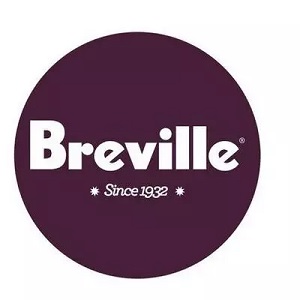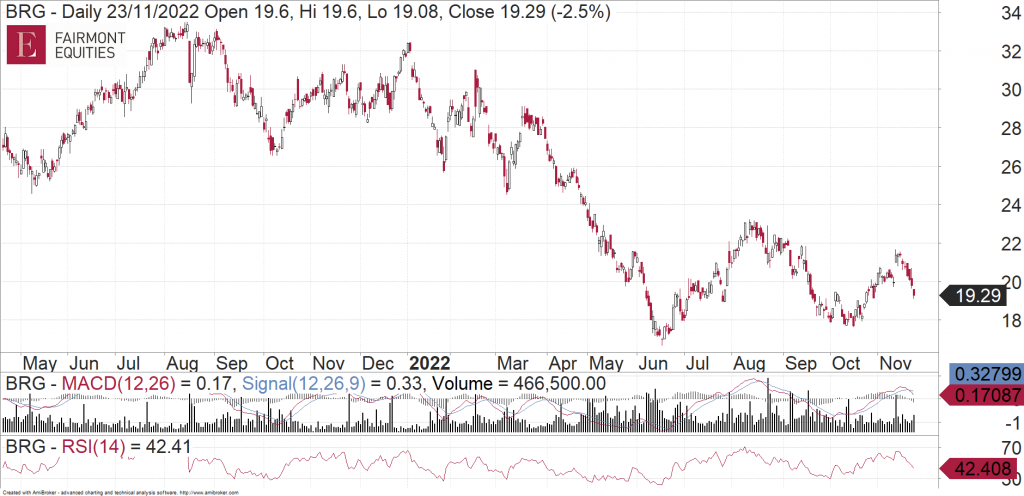Breville Group (ASX:BRG) recently released a trading update that pointed to improved conditions across its Americas segment. While the latter is the main value driver for the shares, the Company has faced other challenges. These have in turn impacted financial performance (in particular margins and cashflow). The share price gains from recent lows in mid-October continued after the trading update in November. However, the recent weakness in the share price raises the question of whether there may be an entry opportunity at current levels.
About Breville Group
Breville Group manages of a number of consumer electrical appliance brands, with a core focus in the small kitchen appliances segment. The operations of BRG now comprises two segments:
i. The ‘Global Product’ segment – focused on the design, development and sale of Breville-branded products supplied in 65 countries to the premium kitchen segment of the market. This segment accounts for 80% of group revenue and comprises contributions from three regions: Americas, Asia Pacific (APAC) and Europe Middle East and Africa (EMEA).
ii. The ‘Distribution’ segment, which distributes products that are designed or developed by a 3rd party pursuant to a license or distribution agreement. The distribution of these products may be sold under a brand owned by BRG (e.g. Breville, Kambrook) or distributed under a 3rd party brand (e.g. Nespresso).
Key Fundamental Drivers
Europe Market Remains Weak
The performance of the EMEA segment in FY22 was a key area of concern for investors. Sales growth for the EMEA segment declined by 16% in 2H22 (on a constant currency basis), which was a sharp deceleration from +39.4% sales growth in 1H22. This reflected consumer softness following the Ukraine invasion, declining end demand, and retailer destocking.
While performance in EMEA is expected to remain challenging through FY23, BRG noted in its recent trading update that sell-out rates continue to outpace sell-in rates. This illustrates retailers’ uncertainty/concerns on Christmas demand. Retailers appear to be taking stock later (late November/early December) for Christmas, which is a trend also evident in other key markets. However, retailers will eventually need to replenish stock if this trend continues Overall, with new product development and geographic expansion into Poland likely to support FY23, positive sales growth for EMEA is not expected until FY24.
Challenges In Maintaining Margins
In FY22, Gross Profit Margin (GPM) declined by 50 basis points to 34.3%. This was slightly better than consensus expectations at the time of 33.7%. GPM in FY22 was well managed, with price rises in all geographies supported by premium market position, offsetting ongoing inflationary pressures in freight and product costs.
With high inflation and rising interest rates placing increased pressure on consumers, the upcoming Christmas trading period is likely to be a key indicator of the demand profile for BRG’s products and the category and whether the Company can maintain GPM. Competitor De’Longhi has indicated that although they are facing several headwinds including slowing consumer demand and higher costs (COGS and warehousing), they will be rational in discounting. This is despite high inventory, preferring to digest one-off fixed costs to stop production instead of flooding the market with additional product via aggressive discounts. However, there is a risk that competitors (including De’Longhi) start discounting aggressively across a number of SKUs to clear stock. This is because global retailers (with the exception of Australia) are overstocked. This could impact margin if BRG responds.
Overall, we expect GPM can be maintained due to lower input costs, improving supply-side headwinds, A$:US$ hedged at 0.74, mid-single digit price increases to offset inflation in raw materials, and no signs of heightened discounting. While freight costs have been reducing, this is expected to be a minor benefit. In terms of EBIT margin performance, the Company is electing to utilise incremental operating leverage in order to undertake additional investment in marketing/R&D/IT. Importantly, the higher reinvestment should translate into faster medium-term sales growth supported by more product, higher brand awareness, and an improved competitive position.
Improving Working Capital Position Expected to Support Cashflow
Operating cashflow in FY22 was impacted by continued inventory build-up ahead of US peak selling season in 1H23 (November/December 2022). Inventory levels at the end of FY22 were double pre-COVID levels and 50% higher when measured as a % of sales. The key factor behind the faster-than-expected ramp-up in inventory is that demand slowed more quickly than BRG had anticipated (especially in EMEA) which has led to a higher inventory balance.
In context, BRG’s elevated inventory position isn’t a problem, as its products are long life. In the recent trading update, BRG disclosed that they have secured the inventory required to support 1H23 and as the supply chain has become more predictable, they will revert back to a flow model in 2H23 (i.e. releasing working capital). Accordingly, the ending inventory balance at the end FY23 is expected to be ~10-20% lower than FY22 ($456m), implying positive support for operating cashflow and a likely return to a net cash balance sheet position. Following an equity raising in May 2020, the balance sheet was in a net cash position until the end of FY21. However, given the higher working capital position in FY22, the balance sheet reverted to a slight net debt position as at 30 June 2022 ($4m).
Fundamental View
The shares have de-rated significantly over the course of the last 12 months, from a 1-year forward P/E multiple of ~37% to ~24x at present. While the current P/E multiple does not appear demanding in the context of an EPS growth profile of +10% over FY22-25 (on a CAGR basis), we prefer to take cautious view on the shares.
The longer-term attractions remain in place. These are: successful expansion into new geographies, expanding market share new product development; entering adjacent categories, and balance sheet capacity to pursue further Merger & Acquisition opportunities. However, we consider that earnings risk over the short-term is weighted to the downside, given continuing challenging conditions in EMEA and the risk to margin from discounting (given that inventory retailers’ levels remain elevated).
Charting View
Like most of the market, BRG has spent the year heading backwards. However, we can see that it put in a “higher low” October. Despite recovering nicely from that level, it has started to fall back sharply in the past few days. For the moment at least, we expect the BRG share price to get cheaper and this means that there is no rush to pick it up at current prices.

Michael Gable is managing director of Fairmont Equities.
Current share prices available here.
You can learn more about technical analysis in this article.
An 8-week FREE TRIAL to The Dynamic Investor can be found HERE.
Would you like us to call you when we have a great idea? Check out our services.
Disclaimer: The information in this article is general advice only. Read our full disclaimer HERE.
Like this article? Share it now on Facebook and Twitter!

